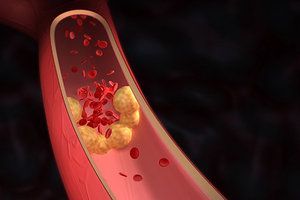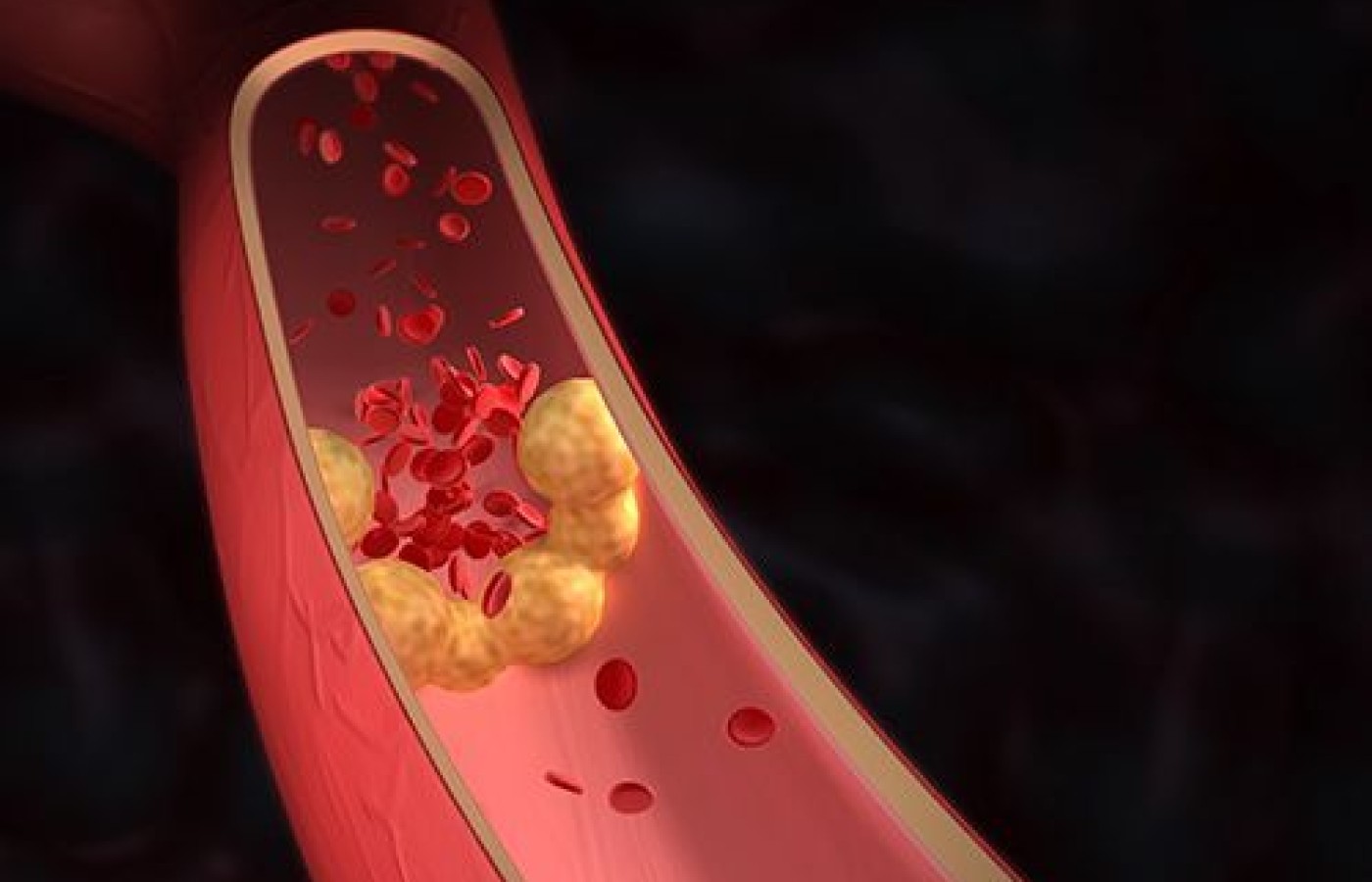You became a chiropractor to serve people, not an insurance company. You deserve to run a business that aligns with your values, supports your family and lights you up. Cash-based care isn’t just a pricing model – it’s a philosophy rooted in freedom, trust and respect for your patients and for yourself. Here's why - and how - to do it.
Cause-Effect: Vascular Disease and LBP
Atherosclerosis is a far-too-common chronic, systemic disease. We tend to think only of the clinical symptoms associated with this disease affecting the coronary arteries, as in a myocardial infarction; or the carotids, as in a TIA or stroke. We often ignore the fact that this is a vascular disease affecting the entire circulatory system.
Atherosclerosis can involve any artery. Symptoms are related to which artery is affected. The problem is silent until there is so much narrowing due to plaque that the nutritional supply to the organ or tissues is significantly compromised, causing episodic or constant ischemia. Vascular disease has recently received more attention as a potential underrecognized risk factor for degenerative disease in the spine.
A Growing Body of Research
In the population-based Framingham cohort, advanced aortic atherosclerosis presenting as calcified deposits in the posterior wall of the aorta preceded intervertebral disc deterioration, was associated with lower back pain,1-2 and also predicted subsequent vascular morbidity and mortality.1-3
Kurunlahti, et al., also report an association between aortic atherosclerosis and lower back pain,4 and other studies suggest insufficient blood supply may be a significant causative factor in disc degeneration.1,5
Smoking, one of the risk factors for arterial disease, has been correlated with low back pain.6 Results of a long-term follow-up study indicated an association between disc diseases and fatal ischemic heart disease.1-4 And a postmortem study suggests an association between atherosclerosis in the arteries of the lumbar area and disc diseases.1-2

A theory of low back pain due to lumbar artery disease was proposed in the mid-1990s.7 On the basis of cadaver studies, intervertebral disc degeneration was associated with advanced aortic atherosclerotic lesions8 and stenotic changes in lumbar arteries associated with chronic LBP.9
Spinal Blood Supply
A review of the arterial blood supply to the spine, courtesy of Gray's Anatomy, demonstrates clearly how atherosclerosis can affect all aspects of the spinal column:
The segmental arteries of the thoracic and lumbar spine branch directly from the thoracic and abdominal aorta. They are the primary blood supply to the spinal column from T2-L5. The segmental arteries come from the lateral aspect of the aorta and course posteriorly along the vertebral body.
After passing posterior to the vertebral body, the segmental arteries divide into dorsal and lateral branches. The lateral branch supplies the paraspinal muscles. The dorsal branch supplies the majority of the vertebrae and spinal cord.
After dividing, the dorsal branch runs posterior past the intervertebral foramen, lateral to the pars interarticularis and inferior to the transverse process. Once it passes posterior to the pars, the dorsal branch subdivides to supply the deep paraspinal muscles and the posterior vertebral arch. When the dorsal branch passes the intervertebral foramen, it gives off the spinal branch, which enters the foramen to supply the contents of the spinal canal. As the spinal branch enters the foramen, it divides into three branches: the posterior central, pre-laminar and intermediate neural branches.
The sacroiliaclumbar vascular system, a complex set of vessels containing multiple anastomoses and areas of collateral flow, supplies the sacrum and lumbar spine below L4. The majority of blood in this system comes from the internal iliac artery; the most significant vessels being the iliolumbar, fourth lumbar, and middle sacral arteries. The iliolumbar artery branches directly from the internal iliac artery and travels superiorly to the L5-S1 disc space, where it branches into the lateral iliac artery and an ascending lumbar artery. The fourth lumbar artery branches from the aorta, as a segmental artery that gives blood to that level, before it heads inferiorly and anastomoses with the iliolumbar artery.
The middle sacral artery, the last branch from the aorta and derived at the bifurcation, travels inferiorly along the ventral surface of L4, L5, and the sacrum to give off segmental branches at each level. While the spinal column receives the majority of blood via segmental vessels that travel horizontally to supply respective levels, the spinal cord itself is supplied by vessels that run longitudinally down the length of the cord.
The three main vessels in this system are the anterior spinal artery and the left and right dorsal lateral, or posterior, spinal arteries. The anterior spinal artery is the largest and is responsible for giving approximately 80 percent of the blood to the cord, while the dorsal lateral arteries make smaller contributions.
We could go on to discuss the blood supply to the cord and cauda equine, but blood supply to the spine is not the topic of this article. My point is that atherosclerosis being a systemic disease, there are many opportunities for plaque formation, since the atheromatous plaques tend to build up where arteries divide into smaller branches. The aorta is a prime example.
Various studies indicate that stenosis involving the spinal arteries may initiate the degenerative process affecting the spine, facets and intervertebral discs.5 Being an avascular structure, the disc may be even more acutely affected by poor circulation. Even though the cells of the intervertebral disc can survive low oxygen tension and relatively acidic pH, its ability to produce proteoglycans drops off quickly.
The strength of the lumbar disc is related to the fluid it is able to imbibe and proteoglycan content of the disc. Proteoglycan is a hydrophilic, negatively charged, branched-chain molecule composed of a protein attached to an oligosaccharide. Proteoglycans are also known as glycosaminoglycans and include such structures as chondroitin and collagen. The negative charge on the branched chains and the hydrophilic nature of proteoglycan internally pressurize the disc by drawing water via osmosis into the nucleus pulposus.5
It is interesting to note that it has been demonstrated that changes in the vascular supply appear in disc degeneration. Normal anastomotic arteries on the anterolateral surface are obliterated and replaced by small, tortuous arteries in degenerated annuli.10-11 The arterial changes occur before the degenerative process and may be related to the ingrowth of vessels from osteophyte formation.10-11 This implies a relationship between nutrition to the disc and subsequent disease.
Some authors believe that neovascularity occurs in response to injury as an attempt to supply the damaged portion of the disc with nutrients.10 Nerve fibers accompany this new ingrowth of vessels into the intervertebral disc. These nerve fibers are nociceptive nerve endings.12 It has been hypothesized that this process of ingrowth of nerve fibers into the intervertebral disc is a major cause of discogenic back pain.
The atherosclerotic process in the lumbar arteries has not been as extensively studied as the coronary arteries, but the disease process is the same. We owe it to our patients to emphasize this association and at the very least, consider it as a contributing factor. It is unfortunate that this association is often ignored.
In the U.S., the primary medical intervention and focus for management of atherosclerosis and hypertension is pharmaceutical.13 Chiropractors can offer a more holistic approach to management and often the reversal of disease, well within our scope of practice, including nutritional and exercise consulting.14 Let us remember that our goal is to treat the cause, not just attempt to alleviate the symptoms.
Takeaway Points
- Atherosclerosis is a systemic disease; it can affect any artery.
- Aortic calcification is an indicator of long-standing atherosclerosis.
- Aortic calcification may also be associated with stenosis of the lumbar arteries.
- Chronic lower back pain can be due to atherosclerosis.
- When the normal nutrition to the intervertebral disc is compromised, degenerative changes may be initiated.
- Ingrowth of vessels and nerve fibers into the avascular intervertebral disc may be the main cause of discogenic pain.
- There is a direct association between cardiovascular disease and chronic lower back pain.
References
- Wang Y, Videman T, Battié MC. ISSLS prize winner: Lumbar vertebral endplate lesions: associations with disc degeneration and back pain history. Spine, 2012 Aug 1;37(17):1490-6.
- Kauppila LI, McAlindon T, Evans S, et al. Disc degeneration/back pain and calcification of the abdominal aorta. A 25-year follow-up study in Framingham. Spine, 1997;22:1642-1647.
- Wilson PW, Kauppila LI, O'Donnell CJ, et al. Abdominal aortic calcific deposits are an important predictor of vascular morbidity and mortality. Circulation, 2001;103:1529-1534.
- Kurunlahti M, Tervonen O, Vanharanta H, Ilkko E, Suramo I. Association of atherosclerosis with low back pain and the degree of disc degeneration. Spine, 1999;24:2080–2084.
- Michael M, Boxell C, Malone D. Pathophysiology of lumbar disc degeneration: a review of the literature. Neurosurg Focus, 2002;13(2).
- "Does Smoking Cause Low Back Pain?" Spine-Health.com, reporting on a study findings presented at the 2001 annual meeting of the American Association of Orthopaedic Surgeons in San Francisco.
- Kauppila LI. Can low-back pain be due to lumbar-artery disease? Lancet, 1995;346:888–889.
- Kauppila LI, Penttilä A, Karhunen PJ, Lalu K, Hannikainen P. Lumbar disc degeneration and atherosclerosis of the abdominal aorta. Spine, 1994;19:923-929.
- Karppinen J, Kurunlahti M, Taimela S, et al. Determinants of lumbar artery occlusion among patients with sciatica: a three-year follow-up with magnetic resonance angiography. Eur Spine J, Sep 2005;14(7):664-670.
- Kauppila LI: Ingrowth of blood vessels in disc degeneration. Angiographic and histological studies of cadaveric spines. J Bone Joint Surg (U.S.), 1995;77:26-31.
- Virri J, Gronblad M, Savikko J, et al. Prevalence, morphology, and topography of blood vessels in herniated disc tissue. A comparative immunocytochemical study. Spine, 1996;21:1856-1863.
- Aoki Y, Takahashi K, Ohtori S, Moriya H. Neuropathology of discogenic low back pain: a review. Internet J Spine Surg, 2004;2(1).
- Jam B. "Serum Cholesterol & Chronic Low Back Pain."
- Thomas L. "Atherosclerosis and Low Back Pain." American Chiropractor, July 2011.



